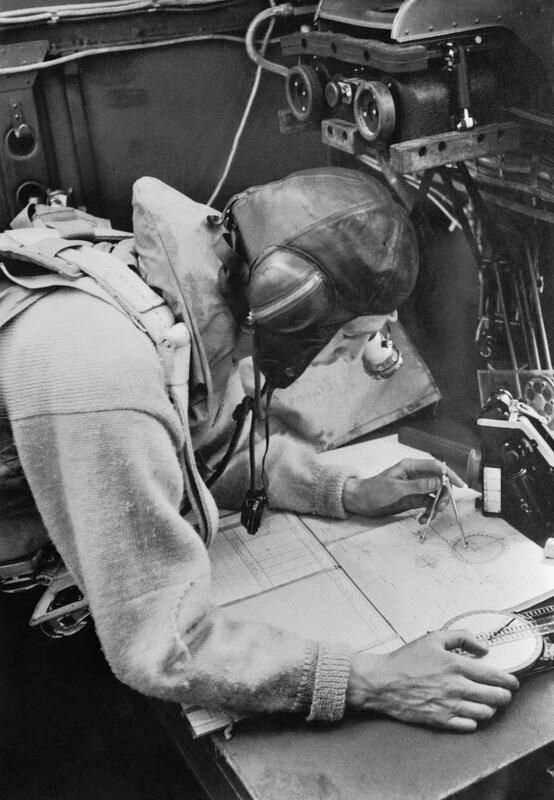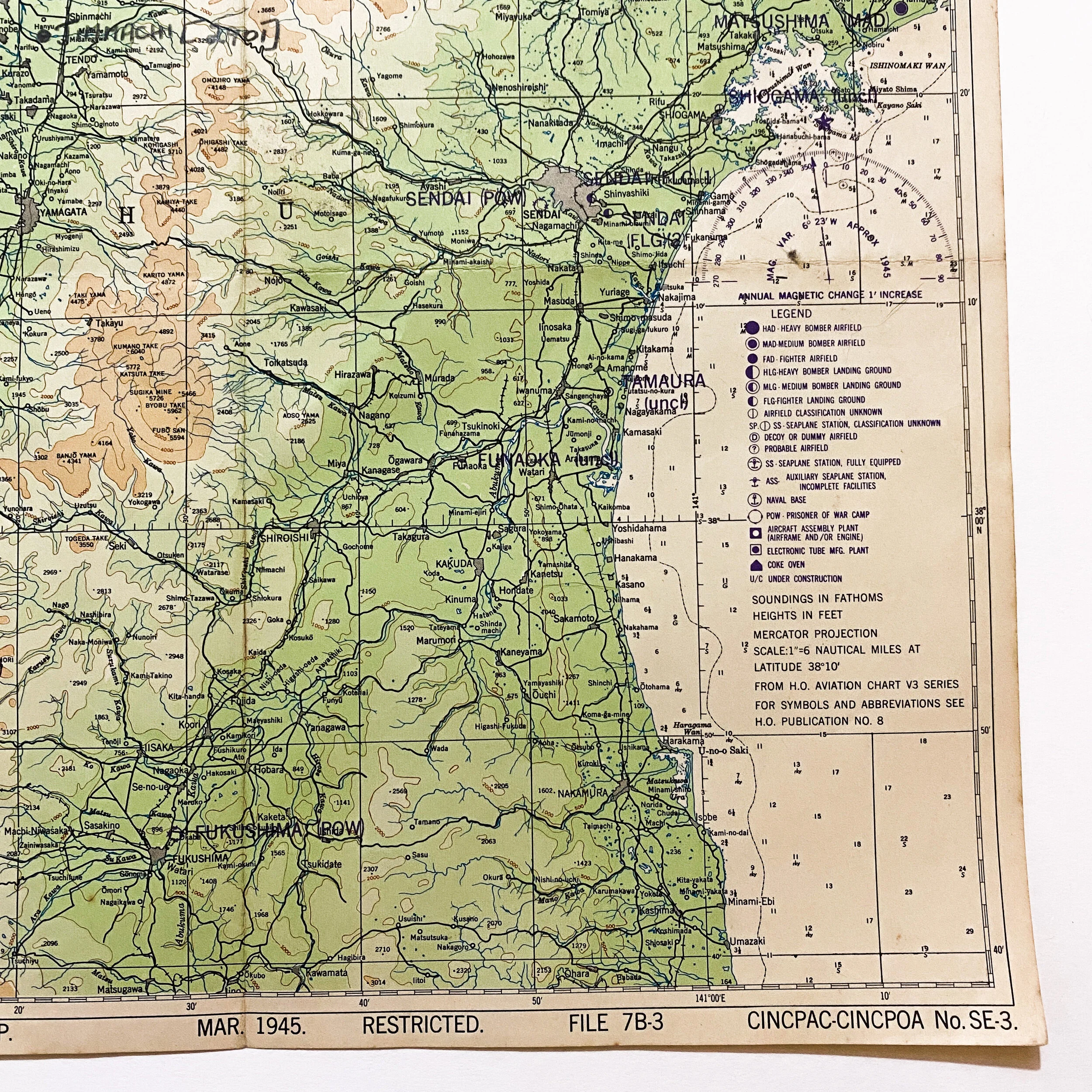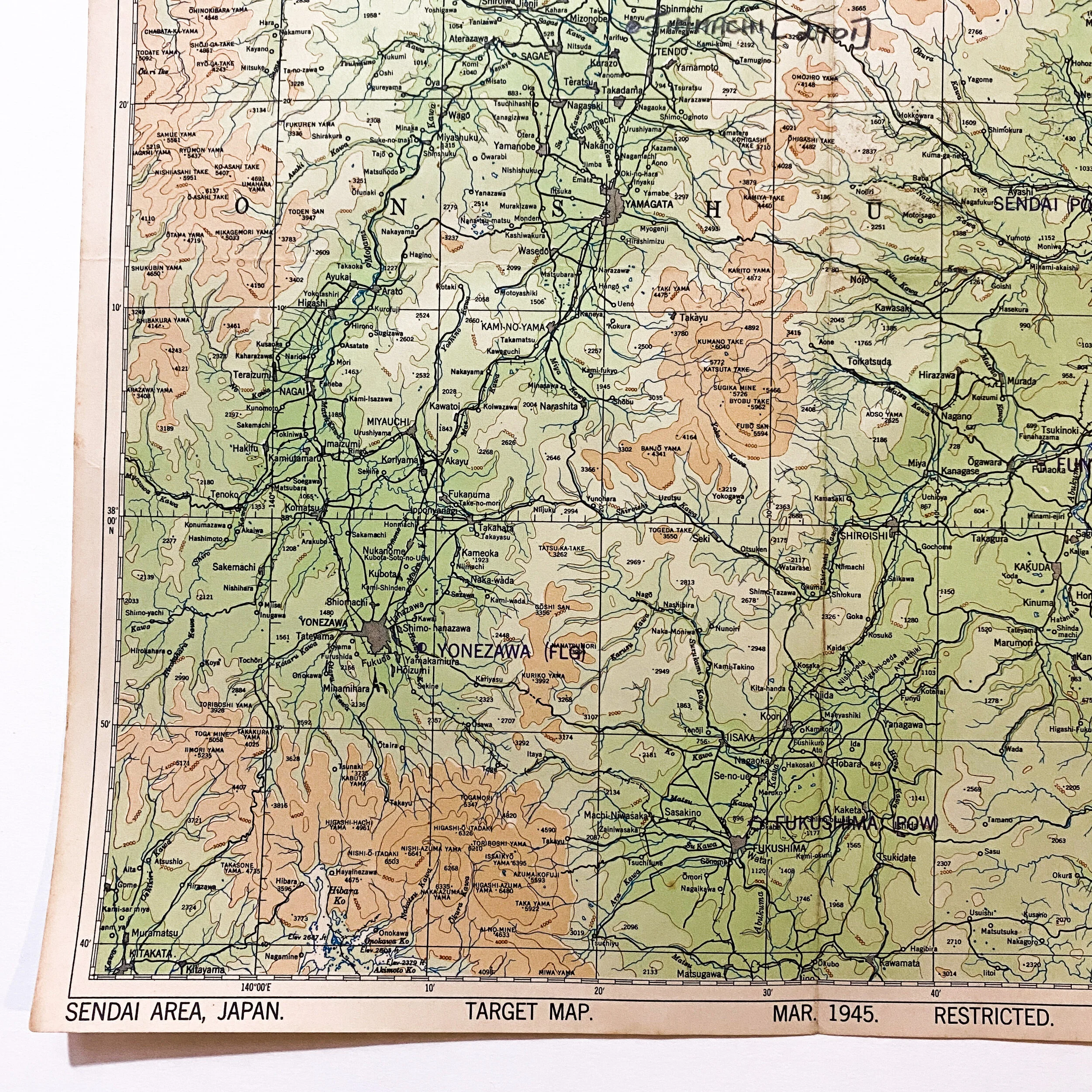Sendai B-29 Heavy Bomber Long Range Bombing Navigator Pilot Map






Sendai B-29 Heavy Bomber Long Range Bombing Navigator Pilot Map
Very Rare WWII Bombardment Wing Navigator Vet RESTRICTED Approach Target Chart Dated March 1945. Sendai Area long range bombing map with RESTRICTED map keys to designated bombing targets.
HAS PENCIL MARKINGS AND ANNOTATIONS OF BOMBING RUN BY NAVIGATOR ON THE MAP.
This is an extremely rare RESTRICTED March 1945 dated 'Target Map' combat used navigation and bombardment map that comes from the estate of a WWII Bombardment Wing Navigator Veteran who served as the navigator on a B-29 bomber during the Pacific War. He led members of his crew using this approach map as they came within navigational bombing range of Japanese naval base, ammunitions factories, etc. throughout many of some of the most famous Pacific Theater battles of WWII as the planes lead navigator. I was able to obtain 5 maps of the many brought back that were carried by the same B-29 navigator. Many of the other maps from this soldier were directly sold to the Smithsonian and other national history museums in the US and overseas. In the photos you will see a reference photo of a US air crewman using the same/similar maps to this one...showing how vital of a role these maps played for objectives and bombing runs.
This is an extremely rare March 1945 dated, US war department map. This map measures 12 inches tall x 12 inches wide and in very sturdy condition. This map also features some of the most famous islands of the Pacific Theater and the bombers view when approaching the bombing targets. This would have been very helpful and used as a visual marker for the navigator and bombardier to better identify their approach to the target.
On July 19, 1945, 131 B-29 bombers from the USAAF 58th Bombardment Wing launched from Tinian island in the Marianas. Several aircraft turned back due to mechanical problems, and 123 aircraft arrived over the target at an altitude of 10,000 feet at just after midnight in the early morning of July 20, 1945. The bombers split into 25 groups of between two and five aircraft each to carpet bomb the densely packed residential center of the city with 10,961 incendiary bombs. The resultant firestorm destroyed most of the historic center of city.[4] As a result of this one attack, 30,000 civilians were killed and 50,000 were injured (approximately 26% of the population at the time). A five square kilometer portion of the center of the city was totally destroyed, with 11,933 residences burned (approximately 23% of the city). Also lost in the bombing were a number of cultural treasures, include the structures of Sendai Castle, and the Zuihoden mausoleum of Date Masamune. On the other hand, the large Sendai Arsenal, and the structures of the IJA 2nd Division were untouched by the air raid.
During the air raid, one B-29 was destroyed on the runway at Tinian (its crew escaped without injury) and no aircraft were lost over Japan. A year after the war, the United States Army Air Forces's Strategic Bombing Survey (Pacific War) reported that 21.9 percent of the city had been totally destroyed.
Sendai experienced a number of minor air raids afterwards. On July 12, a single B-29 dropped 36 incendiary bombs on a Sendai suburb. On July 13, July 25, August 9 and August 10, the city and airport were bombed and strafed by United States Navy carrier-based aircraft.